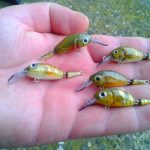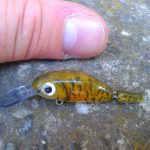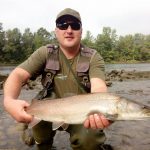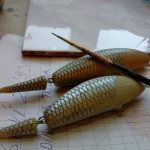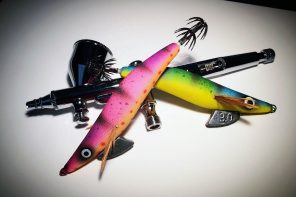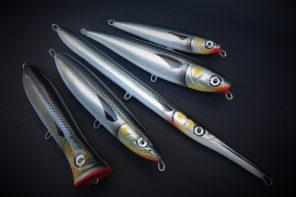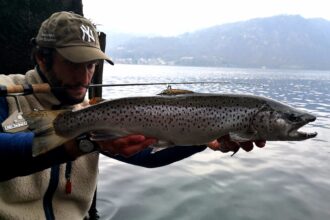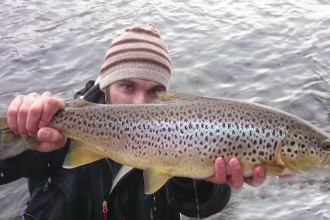Ormai è fatto noto: i balcani ci piacciono. Li abbiamo girati in lungo e in largo a piedi, in macchina o in moto scoprendone molti angoli nascosti e poco conosciuti. Abbiamo pescato in diversi fiumi della zona, passato ore a parlare con pescatori locali e 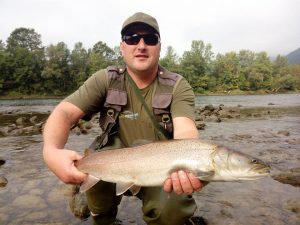 iniziato a scoprire la scuola balcanica di autocostruzione che non smette mai di stupire. Proprio come oggi.
iniziato a scoprire la scuola balcanica di autocostruzione che non smette mai di stupire. Proprio come oggi.
Il mio nome è Slobodan Avramović, noto anche come Avram (soprannome che ho fino dalla mia infanzia). Vivo a Bajina Bašta, piccola cittadina sul fiume Drina, in Serbia e vengo da una vecchia famiglia di pescatori. Mio padre Velimir mi ha instillato la passione per la pesca tanto che oggi sono un pescatore professionale sul fiume Drina e una guida di pesca con licenza dal 2005.
Da quanto peschi?
Ho iniziato a pescare con mio padre ancora prima di entrare alle elementari. Le prime volte, quando ero molto piccolo andavamo sui canali e torrentelli di montagna a trote, che accompagnano i miei ricordi più preziosi dell’infanzia. Questo perché nella mia famiglia la pesca è una tradizione: mio padre l’ha ereditata da suo padre e poi l’ha passata a me. Infatti oggi mio padre è uno dei più vecchi pescatori attivi sul fiume Drina. Il mio primo pesce gatto, ad esempio, l’ho preso nel 1985 con un wobbler Shakespeare, mentre ero su un lago insieme a mio padre. Ci mancava poco che mi trascinasse in acqua: lui pesava solo 6 kg e io avevo solo 6 anni.
Quando hai iniziato a costruire? Ti ricordi la tua prima creazione?
Faccio esche da più di 15 anni, anche se già prima costruivo mosche per andare a trote e temoli.
Perché hai iniziato ad autocostruire?
Volevo vedere cosa si provava a prendere un pesce con una mia esca, come succede con le mosche artificiali o le esche artigianali.
Quando peschi che tecniche pratichi, dove e rivolte a che pesce?
Fondamentalmente amo la pesca in generale, non esiste una tecnica nuova per me, anche se lo spinning all’Hucho hucho (ancora più Hucho hucho qui n.d.r.) è la mia preferita, ma mi piace anche andare a spinning a trote, pesci gatto, lucci, ecc.
Qual è il tuo più grande vizio?
Che non posso stare per 7 giorni senza andare sull’acqua, è come una droga che rende dipendenti fin dall’infanzia.
Qual è il materiale che ami di più? E quale tecnica di costruzione?
Faccio esche a mano usando solo legno, come balsa, tiglio, salice… Gli artificiali fatti a mano usando salice d’acqua sono i miei preferiti, ma è il più difficile da lavorare. Perché il salice ha una gravità specifica, cresce in acqua e ha un’attrazione speciale, ma c’è qualcosa in natura che regola la relazione tra il tipo di legno e l’acqua.

Nel corso degli anni, produttori e tecnologie hanno migliorato molto le nostre attrezzature da pesca, per te qual è stata la novità più utile e rilevante?
La tecnologia è migliorata nel corso degli anni, canne da pesca, bobine, corde sono molto più sofisticati, anche le esche, ma i pesci sono diventati più cauti e più smaliziati. Di conseguenza, l’innovazione da sola non ci porta molto, credo ancora che per il successo nella pesca, tranne la fortuna, la cosa cruciale sia l’esperienza sul fiume dove si pesca per scegliere l’esca giusta al momento in cui deve essere usata e come darle ”vita”.
Qual è l’elemento che conta di più nel successo di un artificiale? Colore e realismo, equilibrio dei pesi e vibrazioni, forma e sua idrodinamica?
Mi preme principalmente a pescare nelle acque limpide, sono sostenitore dell’idea che l’esca dovrebbe essere realistica e avere una certa vibrazione, e ogni artificiale fatto a mano è diverso l’uno dall’altro.
 Ci descrivi i principali processi e fasi della costruzione di un tuo artificiale?
Ci descrivi i principali processi e fasi della costruzione di un tuo artificiale?
I passaggi principali per fare esche sono: in primo luogo, trovare un albero che ha una certa densità di fibra di legno, deve essere pulito senza nodi e cambiamenti di consistenza, farsi l’idea di una particolare forma e poi la magia ”si verifica” .
Quanto tempo dedichi all’autocostruzione e quanto alla pesca?
Il tempo che spendo per fare esche artigianali dipende soprattutto dal tempo libero e dall’umore. Inoltre, lavoro come guardia fluviale e guida di pesca, quindi comunque, tutto il tempo in un modo o nell’altro, lo spendo sul fiume lavorando o pescando, oppure in officina.
Cos’è per te la pesca e cosa significa per te costruire esche?
Per me la pesca è un modo di vivere. Semplicemente, sono nato per portare avanti l’eredità genetica e per vivere la vita del fiume, e conosco solo quel tipo di vita, non potrei immaginarne una diversa da quella. Fare esche per me è un rituale speciale in cui entrano tutto il mio amore e l’energia, per questo penso che il lavoro 100% a mano trasferisca il mio sapere che si distingue dalle aziende in cui vengono usati stampi, in plastica o altri materiali non naturali, fatti a mano.
Qual è la tua marca di esche artificiali presente sul mercato preferita?
Il mio marchio preferito, fin dall’infanzia, è Rapala, perché ho sempre pescato con quei minnow fino a quando non ho iniziato a costruire i miei.
Qual è il tuo sogno di costruttore di esche?
Il mio sogno, come produttore artigianale, è di vedere i miei artificiali diventare conosciuti nel mercato globale, andare in giro per le fiere a presentarli e far conoscere le nostre splendide acque e il mio Paese nella sua versione più bella.
Se potessi scegliere un altro costruttore a cui affiancarti, presente o passato, il più bravo, chi sarebbe?
Ho imparato dai migliori artigiani della regione, come Elez e Šeki, e ho lavorato con loro per un po’ finché non mi sono sentito pronto a prendere la mia strada. Mi piacerebbe essere nato un po’ prima e avere la possibilità di lavorare con Lauri Rapala.
Quali sono, nell’ordine, i primi materiali e attrezzi che consigli a chi vuole iniziare ad autocostruire? E con quale imitazione partire?
Consiglierei ai giovani e futuri maestri di lavorare con materiali naturali. Non è importante a che esca lavorina, l’importante è sia fatta a mano, il proprio prodotto. E questa è la bellezza della produzione artigianale.
Che consigli daresti a chi si avvicina all’autocostruzione?
Il consiglio per i principianti è che devono in primo luogo amare ciò che fanno, perché altrimenti sarebbe un fallimento. Dovranno lavorare lentamente e con pazienza per testare le loro capacità e le loro esche. Alla fine, non c’è sensazione migliore quando i pesci vengono catturati con l’esca fatta a mano che si è creata da soli, è una sensazione incredibile che rimane per sempre.
Per vedere le sue esche o fare due chiacchiere direttamente con lui andate sulla sua pagina Facebook.
———————————————————————————————————————————————————
Hi, my name is Slobodan Avramović, also known as Avram (nickname since my childhood). I live in Bajina Bašta, small town on river Drina, Serbia. I come from old fishing family. Passion for fishing was from my dad Velimir. Professionally, I am fishing ranger on river Drina, and professional guider for fisherman. I have licence for guiding since 2005.

When did you start fishing?
I started to fishing with my father even before entering elementary school. First fishing in early childhood were fishing in mountain rivers and streams where we chased river trout, which still binds the most beautiful memories from the early childhood. In my family fishing is a tradition, my father inherited from his father and passed on to me. Currently my dad is one of oldest active fishermen on river Drina. Also, I caught my first catfish far in 1985 with my father at the lake on wobbler Shakespeare big S, which almost dragged me in to the water. That catfish weighing 6kg full and I had only 6 years.
How long ago did you start to build lures? Do you remember the first bait that you’ve created?
I made lures a more than 15 years, although I am much earlier made artificial flies to catch trout and grayling.
Why did you start to build baits?
I wanted to see how it feels to catch fish on my own bait, such as artificial flies or handmade lures.
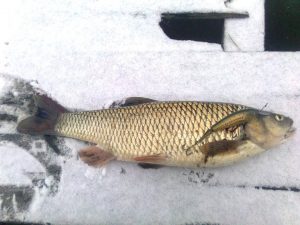 Which are the techniques of fishing you prefer? Where to fish? Which is the kind of fish you most like to catch?
Which are the techniques of fishing you prefer? Where to fish? Which is the kind of fish you most like to catch?
Basically I love fishing in general, there is no technique that is new for me, although spin fishing for ‘’hucho hucho’’ is my favourite, but also I like spin fishing for trout, then catfish, pike, etc.
Which is your biggest vice?
My biggest fishing vice is that I can not take it for 7 days and not go on the water, it’s like a drug you are addicted since childhood.
Which is your favorite material to construct the baits? And what construction technique do you prefer?
I made handmade lures using only wood, such as balsa, linden, willow…) Handmade lures made using water willow is mu favorit, but the hardest to get. Because, willow has a specific gravity, grows in water and has a special lure, but there is something that is more nature regulate the relationship between the type of wood and water.
Over the years, the technology of fishing tackle are much improved. In your opinion whic is the most important and useful innovation?
Improved technology over the years, fishing rods, reels, strings are much more sophisticated, also the baits, but the fish has become more cautious and smarter. In accordance with this, only innovation not bring us much to, I still think that for success in fishing except luck, crucial thing is experience of knowing a river where we fishing and choosing the right bait, the moment when it should be present and how to give it ”sparkle”.
Which element most determines the success of a lure? Color and realism, weight balance and vibration, shape  and hydrodynamics?
and hydrodynamics?
I mainly fishing at the clear waters, I am supporter of the idea that lure should be realistic and have a certain vibration, and every handmade lure is different from each other.
Can you describe the main building steps of your lures?
Main features for making baits are: First, find a tree that has a certain density of wood fiber, it must be clean without knots and changes in texture, then create the idea of a particular form, and then the magic ”occurs”.
How much time do you spend on building baits and how much on fishing?
The time, that I spend for making handmade lures depends primarily on leisure and mood. Also, I am working as a river ranger and fishing guide, so anyway, all the time one way or another, I’m spend on the river working or fishing, or working in the workshop.
What does it mean for you fishing? And what does it mean for you to build lures?
For me, fishing is a way of life. Simply, you born to wear the legacy of the genes and live the life of the river, and I just know that kind of life, I could not imagine a different unique life than this. Making lures for me is a special ritual in which I enter my whole love and energy, so I think that the 100% handmade lure carries with it a certain energy that differs from handmade stamping factory decoys which are especially made of plastic or other unnatural materials.
What is your favorite brand of lures, including those on the market?
My favourit brand since childhood is ”Rapala”, because I was most fishing on ”Rapala” lures, until I started making my own lures.

What is your dream as a manufacturer of baits?
My dream, as handmade manufacturer, to me is to have my own little higher production handmade lures known on the world market, to go around fairs and do my presentation of my handmade lures, and introduce our fishing water and our country in more beautiful edition.
If you could work with another manufacturer of lures – past or present – who would you choose?
As I learned from the best craftsmen from the region, such as ”Elez” and ”Šeki”, and worked with them for a while until I started my own manufacturing. Wish I was born a little earlier, and If I had the opportunity to work with Lauri Rapala.
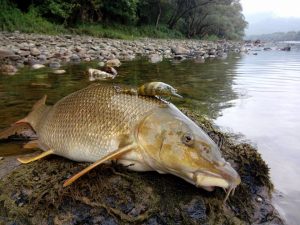 What are the first materials and tools that you’d to advice to anyone who wants to start to build baits? And with what kind of imitation (crank, floating minnow, deep diver …)?
What are the first materials and tools that you’d to advice to anyone who wants to start to build baits? And with what kind of imitation (crank, floating minnow, deep diver …)?
I would advise younger and future masters that lures made from natural materials. It is not mater what kind of lure they are making, important is that lure is handmade, there own product. And that is the beauty of handmade manufacturing.
What advice would you give to those just beginning to build baits?
Advice for beginners that primarily have to love what they do, because otherwise it would be failure .They must work slowly and with patiently, to test their capabilities and their lures. At the end, there is no better feeling when the fish is caught on the handmade lure which you created by yourself, it’s an amazing feeling that stays forever.






